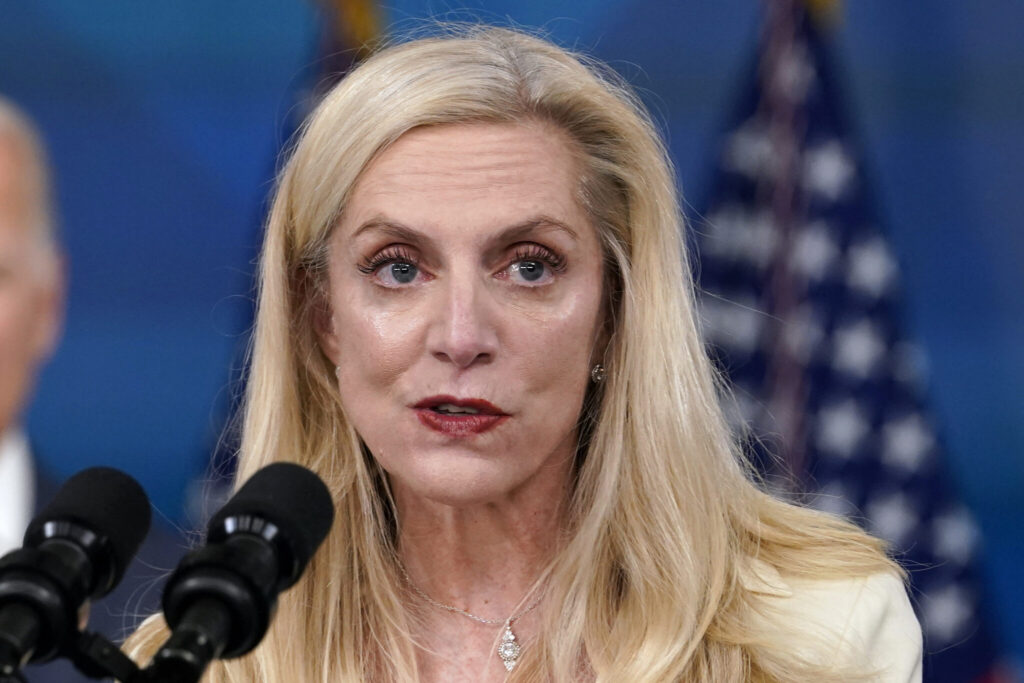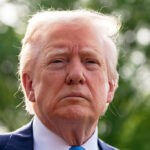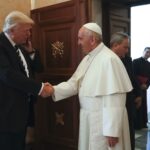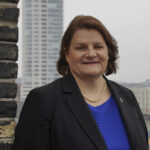Federal Reserve Vice Chair Lael Brainard said Thursday that interest rates need to remain high, even though there are signs inflation is starting to ease. Echoing recent comments from her fellow policymakers, Brainard insisted that the Fed won’t waiver in its commitment to taming prices that have come down some in recent months but remain near four-decade highs. The Associated Press has the story:
Fed’s Brainard backs smaller hikes as inflation easing
Newslooks- WASHINGTON (AP)
Federal Reserve Vice Chair Lael Brainard noted Thursday that recent reports show high inflation in the United States is easing and suggested it was possible that price acceleration may cool without causing significant job losses.
Speaking in Chicago, Brainard sketched out a more optimistic outlook for inflation than some some Fed speakers have in recent days.
At the same time, Brainard cautioned that inflation is still high and said the Fed would have to keep interest rates elevated “for some time” to curb price growth. She did not explicitly signal whether she would support a quarter-point or half-point rate increase at the Fed’s next meeting Jan. 31-Feb. 1.
Even so, Brainard, an influential voice on policy who is close to Chair Jerome Powell, pointed to several trends that she said were likely to lower inflation in the coming months.
The cost of goods such as autos, furniture and clothes has declined, along with energy prices, she said. There are signs the job market is cooling, including a drop in the average workweek, which could signal smaller wage increases. Though higher pay is good for workers, it can fuel inflation if businesses charge more to offset their rising labor costs.
And Americans still generally expect inflation to decline in the coming years, Brainard noted. That’s an important measure because if people assume that prices will keep rising, they will alter their behavior by accelerating their purchases before prices rise further. They may also push for higher pay to offset rising costs, thereby worsening inflation.
All those factors, Brainard said, “may provide some reassurance that we are not currently experiencing a 1970s-style wage–price spiral.”
Fed officials are facing a set of increasingly difficult and high-risk decisions. After a series of big rate hikes last year, the central bank has raised its benchmark interest rate closer to the level that officials believe will finally tame inflation. That level is now the highest it has been in 15 years: 4.25% to 4.5%.
At the same time, the Fed’s key rate is also nearing levels that might turn out to be higher than needed to defeat high inflation — a miscalculation that would likely send the economy into a recession.
Numerous signs show that key areas of the economy are weakening. The housing market has been severely damaged by higher mortgage rates. This week, a report on retail sales showed that Americans pulled back on their spending last month, though some of the decline reflected lower prices for cars, gas, and other goods. Manufacturing output fell. And surveys of service companies and factories earlier this month pointed to shrinking production.
At the same time, other Fed officials this week have sounded a hard line on inflation and emphasized that they still support raising the central bank’s key rate above 5%. Some officials favor a full percentage point of additional rate increases.
“We’re not at 5% yet, we’re not above 5%, which I think is going to be needed given where my projections are for the economy,” Loretta Mester, president of the Federal Reserve Bank of Cleveland, said Tuesday in an interview with The Associated Press.
The combination of still-higher rates and gloomy economic data helped send financial markets sinking Wednesday, with smaller declines continuing Thursday.







